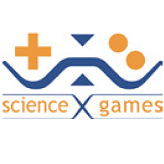Students present their work at a major AI conference

The Platform for Artificial Intelligence (PFIA) is a major annual event in artificial intelligence research. It addresses issues and research common to both research and industry. The 14th PFIA, supported by more than ten industrial sponsors, took place from 28 of June to the 2nd of July 2021 in remote mode and welcomed speakers from the United States and the United Kingdom.
This year, two groups of students in their 2nd year of the Polytechnique engineering cycle were able to present their Collective Scientific Projects (CSP) in the parallel session "Games and AI". Their projects were proposed by the company Ubisoft and carried out with the help of the "Science and Video Games" Chair held by Raphaël Granier de Cassagnac, CNRS research director at the Leprince-Ringuet Laboratory (LLR*).
The first project focused on the automatic generation of dialogues between non-player characters (NPCs). The NPCs contribute to the player's immersion by giving life to the world in which he evolves, for example by giving him information, or by simulating the daily life of people in this virtual world. Currently, these dialogues are very often static and not renewed, so the students who conducted this CSP created an automated system based on decision trees to vary the discussions.
These trees are composed of blocks carrying information about the story narrated by the NPC, and contain branches to add details to the stories. In order to vary the transmission of stories between NPCs, the students then gave " personality traits " to the characters. These could be anything from speech tics, good or bad memory, or giving little or a lot of detail, creating unique narratives that are passed between NPCs. This system could in the future be adapted so that characters in a game remember their actions in a day to make the world seem even more alive to the player.
In order to make the movements of video game creatures more realistic and believable, the second PSC students animated virtual creatures with evolutionary neural networks. The 'creatures' were composed of simplified bones, muscles and joints that a neural network had to direct in 2D (Figure 1). The students used a particular algorithm called N.E.A.T., which randomly generates neural networks and evaluates their performance according to defined criteria, in this case the ability to make the creature move. The N.E.A.T. algorithm then creates a new 'generation' of networks by making small modifications to the best performing networks.
 Figure 1 : Virtual creature animated by a neural network. The black rods represent the bones, the links the muscles, the blue balls the joints and the yellow balls the extremities of the creature's limbs.
Figure 1 : Virtual creature animated by a neural network. The black rods represent the bones, the links the muscles, the blue balls the joints and the yellow balls the extremities of the creature's limbs.
Ainsi, les élèves ont pu observer l’évolution de l’aptitude des réseaux de neurones à diriger leur créature au cours des générations. Ils ont pu faire varier cette évolution notamment en fonction de la complexité de la créature et de la probabilité de modification entre générations de réseaux.
In this way, the students were able to observe the evolution of the neural networks' ability to direct their creature over the generations. They were able to vary this evolution according to the complexity of the creature and the probability of modification between generations of networks.
This year, the "Science and Video Games" Chair supported eight CSPs in various fields. The students, who are very involved in their projects, have the opportunity to present their projects in various contexts, here at a well-known conference in the field of AI. These interventions underline the proximity of the students to the Chair and the excellence of the learning through research provided by the Chair.
*LLR: a joint research unit CNRS, École Polytechnique - Institut Polytechnique de Paris
>> About the Chair :
Organised as a Gamelab and supported by Ubisoft, the "Science and Video Games" Chair aims to enhance the realism, gameplay and accessibility of video games through science, as well as to use this medium to spread scientific culture. Led since 2019 by Raphaël Granier de Cassagnac, this Chair, which is interdisciplinary in nature, aims to facilitate the videogame integration of models (physical, economic, social, etc.) and addresses various techniques such as 3D modelling, sound spatialisation or artificial intelligence. Teaching is another innovative axis of the Chair, aiming to familiarise engineering students with the industry's methodologies and to train a pool of video game professionals.
 Support l'X
Support l'X